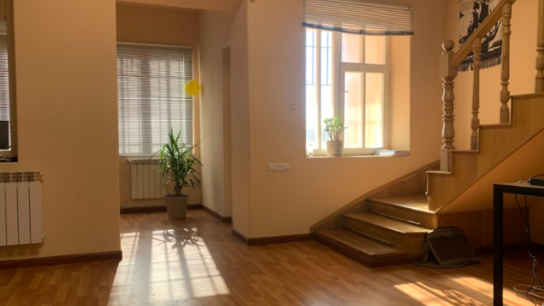Designing a garden is a creative and rewarding endeavor that allows you to transform outdoor spaces into beautiful and functional areas. Whether you’re starting from scratch or revamping an existing garden, thoughtful plant selection and landscaping techniques can enhance the aesthetic appeal, create a harmonious environment, and maximize the use of outdoor space. In this guide, we’ll explore essential garden design tips focusing on plants and landscaping to help you create a stunning and inviting garden that reflects your style, complements your home, and provides a sanctuary for relaxation and enjoyment.
Subtitles:
- Choosing the Right Plants
- Creating a Balanced Landscape
Choosing the Right Plants
1. Consider Climate and Growing Conditions
Select plants that thrive in your local climate and growing conditions:
- Native Plants: Choose native plants adapted to your region’s climate, soil type, and sunlight exposure for low-maintenance and sustainable landscaping.
- Drought-Tolerant Species: Incorporate drought-tolerant plants for water-wise gardening, conservation of resources, and resilience during dry periods.
- Sun vs. Shade Plants: Identify areas of your garden with sun and shade conditions to match plants’ light requirements for optimal growth and health.
2. Plan for Seasonal Interest
Plan for year-round interest with a mix of seasonal plants and blooming periods:
- Spring Bloomers: Include spring-flowering bulbs, such as tulips and daffodils, along with early-blooming shrubs and perennials for a vibrant start to the gardening season.
- Summer Foliage and Flowers: Add summer-flowering annuals, perennials, and flowering shrubs for color, texture, and pollinator attraction during the warmer months.
- Fall Foliage and Berries: Incorporate plants with fall foliage colors, ornamental grasses, and berry-producing shrubs for autumn interest and wildlife habitat.
- Winter Structure: Integrate evergreen trees, shrubs with interesting bark or berries, and winter-blooming plants to provide structure and visual appeal during the winter months.
3. Create Diversity and Balance
Achieve visual interest and ecological balance with a diverse plant palette:
- Height Variation: Combine plants of varying heights, from ground covers and low-growing perennials to tall shrubs and trees, to create layers and depth in the garden.
- Texture and Form: Mix plants with different foliage textures, leaf shapes, and growth habits, such as feathery ferns, bold grasses, and architectural succulents, for contrast and visual impact.
- Color Harmony: Create color schemes or themes using complementary or harmonious plant colors, considering foliage colors, flower hues, and seasonal changes for a cohesive and inviting garden design.
Creating a Balanced Landscape
1. Define Outdoor Spaces
Define functional areas and pathways within the garden for usability and circulation:
- Entryways and Focal Points: Designate entry points, pathways, and focal points, such as garden arches, pergolas, or statues, to guide movement and draw attention to key features.
- Outdoor Living Areas: Integrate outdoor seating areas, dining spaces, or relaxation zones with strategic plantings, hardscape elements, and privacy screens for comfort and enjoyment.
- Transition Zones: Create smooth transitions between garden areas, such as from formal to informal gardens or from open spaces to secluded retreats, using plantings, borders, or structural elements.
2. Incorporate Hardscape Features
Enhance the garden design with well-planned hardscape elements and structures:
- Pathways and Pavers: Install pathways, stepping stones, or pavers to connect different garden areas, improve accessibility, and define circulation patterns.
- Garden Edging: Use edging materials, such as bricks, stones, or metal strips, to delineate planting beds, lawns, and borders, providing clean lines and structure to the landscape.
- Water Features: Consider adding water features, like fountains, ponds, or birdbaths, for sound, movement, and wildlife attraction, creating a tranquil and dynamic garden ambiance.
3. Maintain Balance and Harmony
Maintain a sense of balance, proportion, and harmony throughout the garden design:
- Scale and Proportion: Choose plants and hardscape elements that suit the scale of your garden space, avoiding overcrowding or underutilization for a balanced and cohesive look.
- Unity and Repetition: Create unity and visual flow by repeating plant groupings, colors, or design motifs across different garden areas, tying the landscape together harmoniously.
- Seasonal Maintenance: Plan for ongoing garden maintenance, including pruning, watering, fertilizing, and seasonal clean-up, to preserve the garden’s health, beauty, and longevity.
Conclusion
By incorporating these garden design tips focusing on plants and landscaping, you can create a captivating and functional outdoor space that reflects your personality, enhances your lifestyle, and fosters a connection with nature. Choose plants suited to your climate and growing conditions, plan for seasonal interest and diversity, and create a balanced landscape with defined spaces, hardscape features, and harmonious elements. Regular maintenance, care, and occasional updates will ensure your garden remains a vibrant and inviting sanctuary for relaxation, recreation, and enjoyment throughout the seasons.








